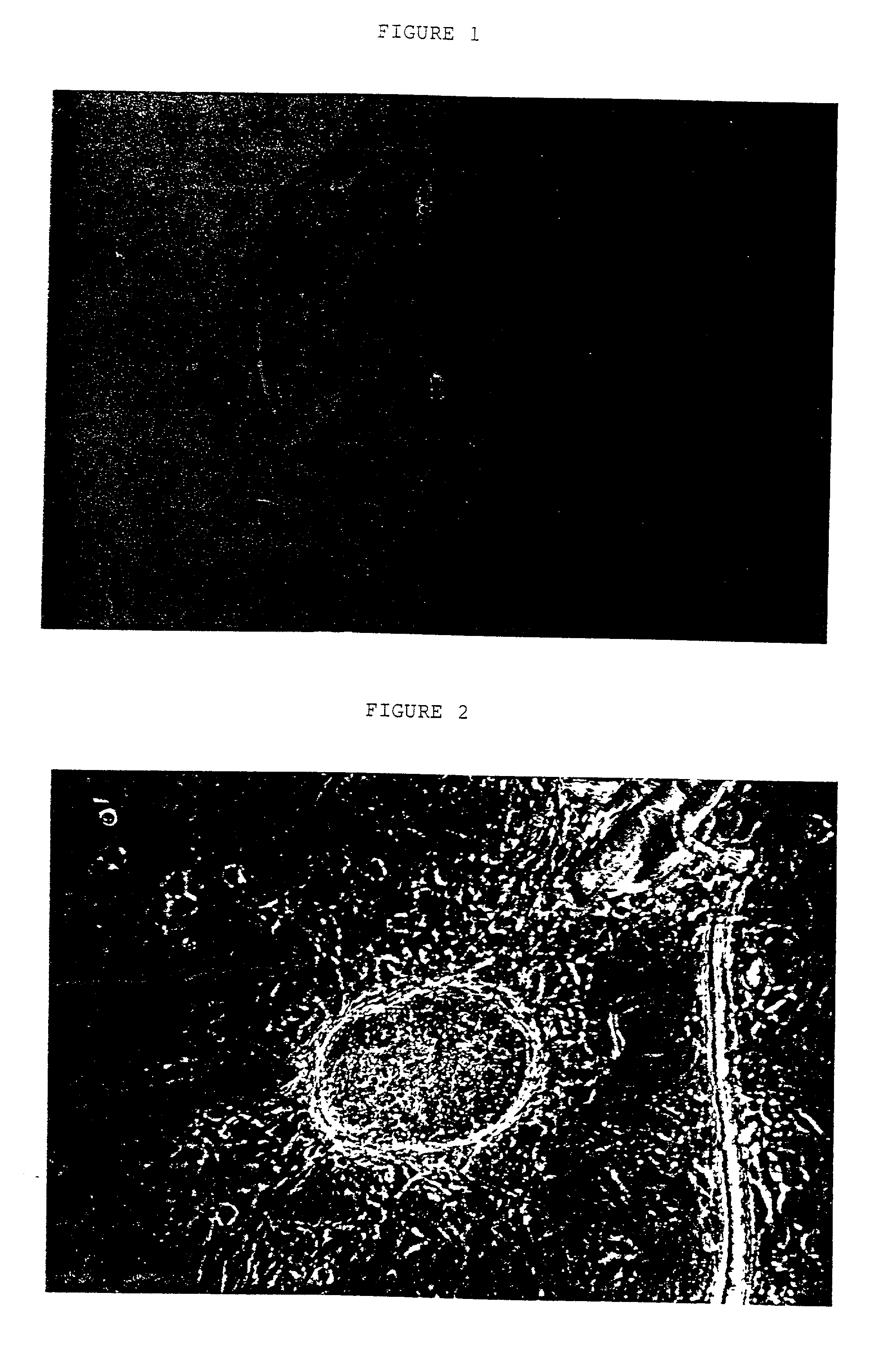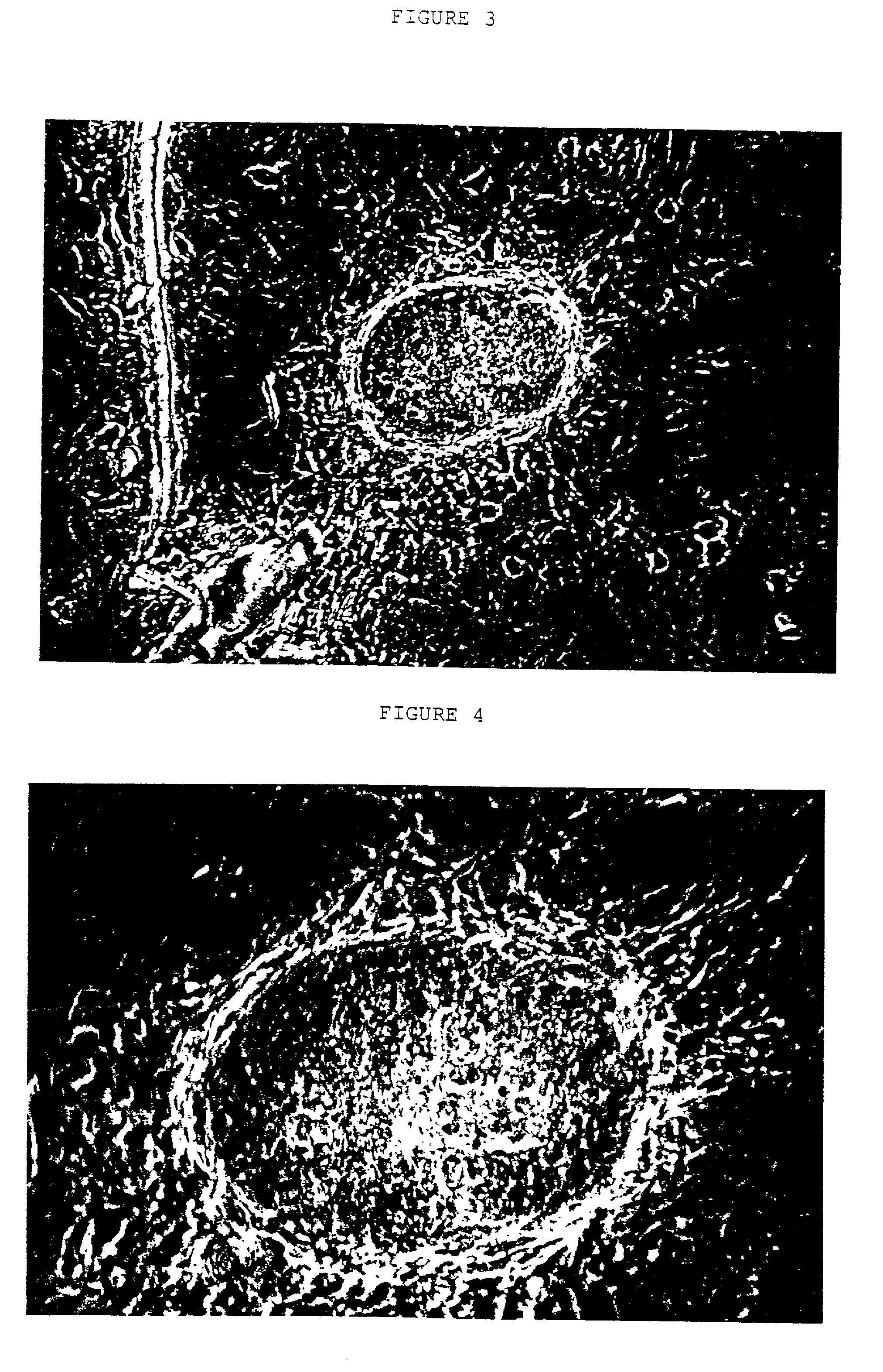Embryonic or stem-like cell lines produced by cross species nuclear transplantation
a technology of embryonic stem cells and nuclear transplantation, which is applied in the direction of genetically modified cells, animal repellents, peptide/protein ingredients, etc., can solve the problems of high controversy over the acquisition of cells or tissues from aborted fetuses, and the inability to produce "fetal-like" cells from patients
- Summary
- Abstract
- Description
- Claims
- Application Information
AI Technical Summary
Benefits of technology
Problems solved by technology
Method used
Image
Examples
Embodiment Construction
[0128] MATERIALS AND METHODS
[0129] Donor Cells for Nuclear Transfer
[0130] Epithelial cells were lightly scraped from the inside of the mouth of a consenting adult with a standard glass slide. The cells were washed off the slide into a petri dish containing phosphate buffered saline without Ca or Mg. The cells were pipetted through a small-bore pipette to break up cell clumps into a single cell suspension. The cells were then transferred into a microdrop of TL-HEPES medium containing 10% fetal calf serum (FCS) under oil for nuclear transfer into enucleated cattle oocytes.
[0131] Nuclear Transfer Procedures
[0132] Basic nuclear transfer procedures have been described previously. Briefly, after slaughterhouse oocytes were matured in vitro the oocytes were stripped of cumulus cells and enucleated with a beveled micropipette at approximately 18 hours post maturation (hpm). Enucleation was confirmed in TL-HEPES medium plus bisbenzimide (Hoechst 33342, 3 .mu.g / ml; Sigma). Individual donor ce...
PUM
 Login to View More
Login to View More Abstract
Description
Claims
Application Information
 Login to View More
Login to View More - R&D
- Intellectual Property
- Life Sciences
- Materials
- Tech Scout
- Unparalleled Data Quality
- Higher Quality Content
- 60% Fewer Hallucinations
Browse by: Latest US Patents, China's latest patents, Technical Efficacy Thesaurus, Application Domain, Technology Topic, Popular Technical Reports.
© 2025 PatSnap. All rights reserved.Legal|Privacy policy|Modern Slavery Act Transparency Statement|Sitemap|About US| Contact US: help@patsnap.com



